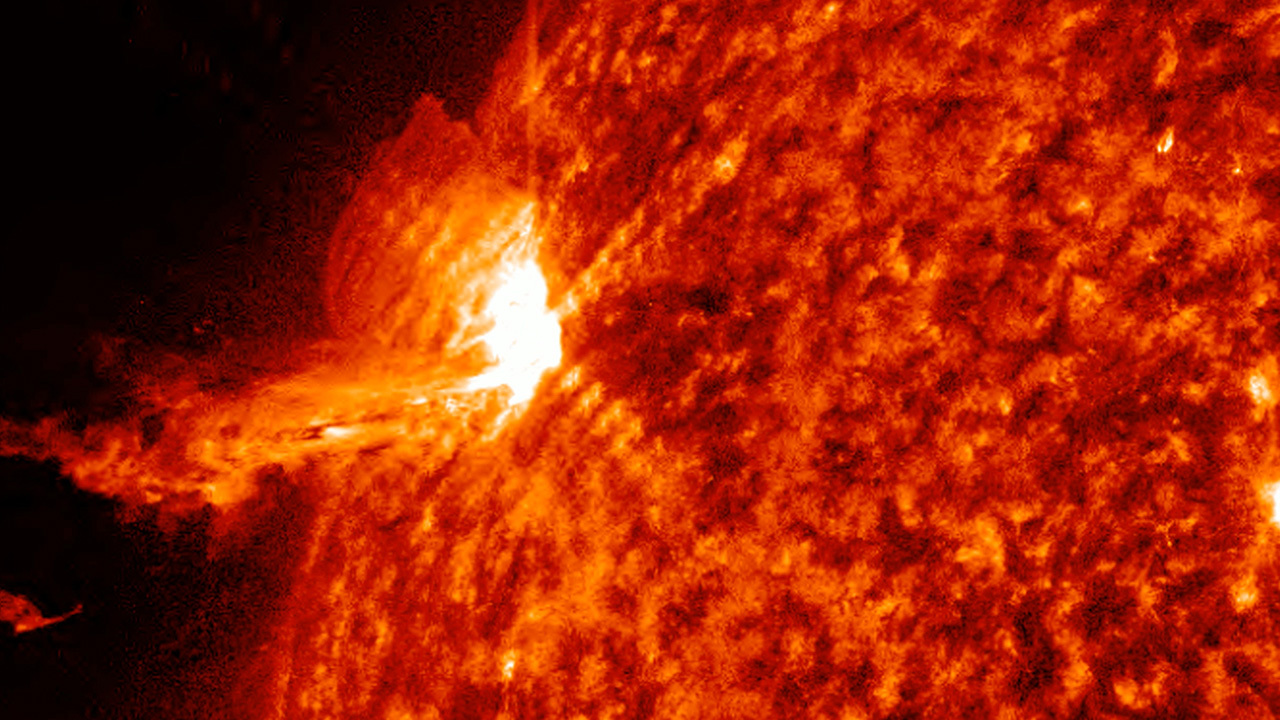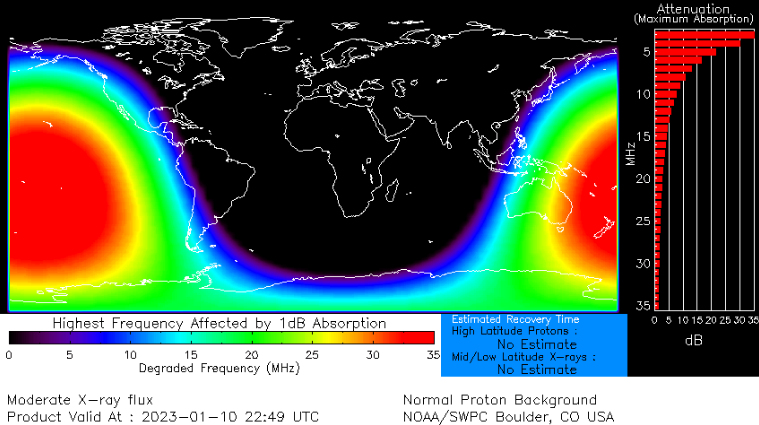Solar flare hat trick: Sun unleashes another powerful X-flare in less than a week!
Solar activity doesn't look like it's slowing down anytime soon.
The sun has fired off another powerful X-class solar flare, this time from a newly emerging sunspot as it turns to face Earth. This solar outburst marks the third X-class flare in less than a week.
NASA's Solar Dynamics Observatory recorded a massive solar flare on Tuesday (Jan. 10) at 5:47 p.m. EST (2247 GMT). The blast hurled a plume of debris into space and radiation from the flare ionized Earth's upper atmosphere, triggering radio blackouts across the South Pacific, according to Spaceweather.com.
Solar flares are categorized by size into lettered groups, with X-class being the most powerful. Within each class, numbers from 1 to 10 (and beyond, for X-class flares) indicate a flare's relative strength. The recent flare clocked in at X1.09, a relatively weak example of the most powerful class.
Related: Huge solar flare erupts on the sun from 'hyperactive' sunspot

The sun has now unleashed three powerful X-class flares, just days apart, and all from different sunspots. This increased solar activity is as the sun comes out of its dormancy for solar cycle 25, which scientists predict will peak in 2025.
Solar flares are caused when magnetic energy builds up in the solar atmosphere and is released in an intense burst of electromagnetic radiation. More powerful M- and X-class flares can cause minor to extensive radio blackouts on the side of Earth facing the sun at the time of the eruption.
This is what happened when the recent X1.09-class solar flare sent a strong pulse of X-rays and extreme ultraviolet radiation toward Earth. Traveling at the speed of light, the radiation reached Earth in just over eight minutes and ionized the upper layer of Earth's atmosphere — the thermosphere — triggering a shortwave radio blackout across the South Pacific.
Get the Space.com Newsletter
Breaking space news, the latest updates on rocket launches, skywatching events and more!

Coronal mass ejections, or CMEs — large releases of plasma and magnetic field from the sun — can also be triggered by strong M-class and X-class flares. CME eruptions can disrupt Earth's magnetosphere and result in geomagnetic storms that can push auroras closer to the equator than is possible during calm conditions.
So far, no CME has been observed emerging from the area responsible for the powerful X-flare, which came from a sunspot dubbed AR3186.
Even more solar activity could soon be on the horizon as a pair of large active regions — currently lurking behind the sun's eastern limb — will come into view later this week, according to Spaceweather.com.
To find out if there is a solar flare today and to keep up with the latest space weather findings, visit the National Oceanic and Atmospheric Administration's Space Weather Prediction Center to see the most recent solar X-ray data from the agency's GOES weather satellites that perch over the eastern and western U.S.
Follow us on Twitter @Spacedotcom and Facebook.
Join our Space Forums to keep talking space on the latest missions, night sky and more! And if you have a news tip, correction or comment, let us know at: community@space.com.

Daisy Dobrijevic joined Space.com in February 2022 having previously worked for our sister publication All About Space magazine as a staff writer. Before joining us, Daisy completed an editorial internship with the BBC Sky at Night Magazine and worked at the National Space Centre in Leicester, U.K., where she enjoyed communicating space science to the public. In 2021, Daisy completed a PhD in plant physiology and also holds a Master's in Environmental Science, she is currently based in Nottingham, U.K. Daisy is passionate about all things space, with a penchant for solar activity and space weather. She has a strong interest in astrotourism and loves nothing more than a good northern lights chase!









